
In 2021, Facebook announced that they were changing their name to Meta, and that they were going to “help the metaverse come to life. With this, a whole new spectrum of grifting was born, and now people want to make money in the metaverse.
—>>Build An Income-Generating Website That Lasts Decades!
—>>Watch how I built my business step-by-step in a few minutes.
—>>Earn online income for a lifetime.
>>Start Now<<
Let’s be clear. The metaverse doesn’t exist. You can’t make money in the metaverse (yet) because it’s not a thing.
People talk about it on YouTube, podcasts, and blogs because it’s a question people are asking, but everything you read is basically clickbait or a shill for some company/token they are invested in.
To start, I want to cover the basics how influencers are twisting words and changing definitions to confuse content consumers. Let’s cover what the “metaverse” actually is, versus what people think it is.
- The Metaverse We Were Promised VS What We Were Given
- What “The Metaverse” In 2022 Actually Is
- 3 Ways To Make Money In The “Metaverse”
- 1. Buying & Selling Gear
- 2. Buying & Selling Crypto Tokens
- 3. Creating Influencer Content
- What About Buying & Selling Land In The Metaverse?
- 4 Metaverse Games To Make Money
- 1. Decentraland
- Making Money in Decentraland
- How Do You Acquire NFTs to Sell In Decentraland?
- Profit Potential in Decentraland
- The Biggest Decentraland Success Story
- The Decentraland In-Game Tokens
- 2. Sandbox
- Making Money in Sandbox
- Profit Potential for Sandbox
- Biggest Sandbox Success Stories So Far
- The Sandbox In-Game Tokens
- 3. Somnium Space
- Making Money in Somnium Space
- Profit Potential for Somnium Space
- Most Noteworthy Sales
- In-Game Tokens
- 4. Second Life
- Making Money & Profit Potential in Second Life
- Linden Dollars Are Not a Cryptocurrency
- 1. Decentraland
- Final Thoughts About Making Money In The Metaverse
The Metaverse We Were Promised VS What We Were Given

The metaverse is supposed to be an immersive experience into a digital world. Since the metaverse doesn’t actually exist (the name originates from a science fiction book called Snow Crash), what the metaverse actually will be, depends on who you’re asking.
In the original book, technology is so advanced that the experience is basically like real life. There are more things you can do, since it’s digital, but there are still “rules to the road” so to speak, so it’s not complete and total chaos. People hop in an out of the metaverse through phone booth-like stations, and you have different levels of experiences based on your wealth, e.g. a rich person may have equipment that allows them to touch and feel things, or have a high quality avatar, while a poor person may just have a black-and-white basic avatar and have limited movement capabilities.
Based on the original descriptions in the book, our current technology cannot create “the metaverse”. Even the best VR experience is kind of a cool gimmick at best, but certainly not immersive and life-like. It’s certainly not an expansive world. It’s a video game.
What “The Metaverse” In 2022 Actually Is
The Metaverse in 2022 is actually just a bunch of companies running sandbox games trying to position themselves as “the best metaverse”.
For example, there’s this stupid-ass game called Decentraland, which, so-far, can probably claim to be the most well-known metaverse game. It’s basically a free and open world where you can walk around and interact with objects in the world, as well as buy and sell things.
The trouble is – it’s not VR. It’s a computer game.
They built it on Ethereum, so it’s on “the blockchain”, adding to the list of stupid buzzwords they can use to advertise it, but essentially, this is just a computer game. There are lots of open world “sandbox” computer games that allow you to roam around, build things, and engage in limited digital economy.
No Man’s Sky uses an algorithm to create literally infinite potential planets you can explore and develop. You fight against the dangers of space, alien creatures, and other players. You can build your own space fleet, set up a base and develop resources on a planet. Sounds like the metaverse, right?
Even a basic children’s game like Minecraft allows for building structures, interacting with other players online, and customizing your game experience within an “online world”… kind of like the metaverse!
Why are these games not called metaverse games?
Because they are legitimate companies building games for people who want to play fun games.
In my opinion, right now, companies marketing their products as metaverse products are simply trying to capitalize on the hype.
Below is a hilarious response on Twitter to someone trying claim that a “rave” happening in the metaverse. In reality, it was just a multiplayer video game with some music playing.
Don’t get me wrong – technology has come a long way since the video games of the 70’s. This isn’t pong anymore. This isn’t Mario Brothers. You can create an avatar and interact with people live, across the world, via the internet. These are a new kind of communities emerging on online platforms. Where they go in the next 50 or 100 years is anybodies guess.
As of right now, metaverse games are nothing new. Second Life started in 2003 and had a million users by 2013. You could even buy and sell stuff using in-game credits, and make money in the marketplace. I remember my friends in high school telling me how their brother bought a detachable penis in the game. The game is still around, and still has people who play on a regular basis.
Guess what. It wasn’t built on a blockchain. It wasn’t marketed as a metaverse. It’s just a multiplayer online game. The freedom is a cool concept, and the social implications of interacting with other players in an online world is certainly interesting, but let’s be honest. It’s not the metaverse.
Contrast the video above of Second Life with the video below of Cornucopias, which is marketed as a metaverse game. Can you spot the difference? Spoiler: There is none. Except that Second Life is a function game with a players, and Cornucopias is just a concept.
So now that you now the metaverse is not real, can you still make money with products and services that market themselves as such? Yes. Probably.
Nobody owns the right to develop an immersive gaming experience, and people are already talking about “which metaverse” you should invest your time into. There will likely be multiple companies in the coming years who try to capitalize on this concept, and maybe one will catch on. Maybe using the term “Virtual Reality” will fade, and people will start calling it Metaverse instead. Who knows. It’s just marketing.
However, where people are spending money, there’s always a chance to make money.
While I don’t see a ton of opportunity to make money within the actual “world” of the metaverse, I do see plenty of opportunities to make money as part of the ecosystem.
3 Ways To Make Money In The “Metaverse”

1. Buying & Selling Gear
Most metaverse ecosystems have their own in-game token, which can be used to buy and sell things as part of the metaverse economy. The “dream” is to be able to create a business in the metaverse, which will get you real money in the real world.
One of the first, and probably the most successful examples of this is the L$ (Linden Dollar) from Second Life. L$ were one of the first digital money trading pairs available, and you could trade your Second Life money tokens for bitcoin as early as 2011, just two years after Bitcoin launched.
With these in-game tokens, you can buy things like skins or in-game items that have value based on their functions or their appearance. You can acquire these tokens by exchanging your local currency for in-game currency, or, ideally, performing some sort of task within the game.
In Second Life, you can hunt for gems or go fishing to earn. In Decentraland you can play digital casinos with bitcoin or create wearables for other characters. In many games like The Sandbox you can create assets and sell them to other players as NFTs, or make mini-games to play but this is not an in-game activity, and requires developer skills.
There are, of course, secondary marketplaces where you can buy and sell these items as well.
The trouble is acquiring the skills to make these things, then successfully marketing them to an audience, and doing it consistently enough to earn good money. As of now, making money doing this these is a novelty, not an income.
2. Buying & Selling Crypto Tokens
If you step outside of the metaverse for a moment, you can make money trading the tokens which represent the metaverse in various ways. For example, the Sandbox game is represented by the $SAND token, and Decentraland is represented by the $MANA token. By purchasing these tokens and holding the over a period of time, you can make money if they go up in value.
Just make sure to 1) buy them at the right time, and 2) sell them at the right time.
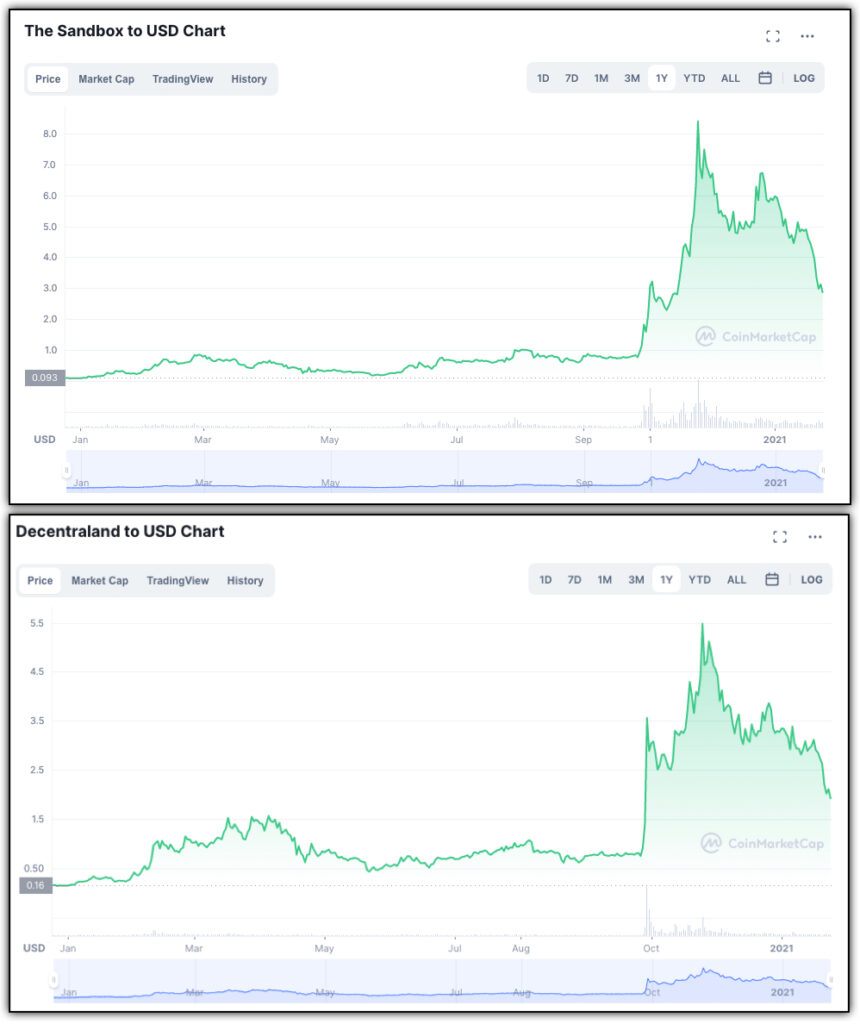
The truth is, most token in the crypto markets are highly illiquid, meaning there are not a lot of buyers. There can be months or years of no activity, then a strong spike in interest, followed by a massive price dump, and most never recover to their previous all time highs.
So far, there hasn’t been a single one which has steadily accrued value over time.
We’re still early in terms of how to actually value things in any type of digital world, so there is definitely a chance that one of these tokens could have some kind of value in the future. The trouble is choosing which one.
Some people do successfully trade in an out of these tokens and end up profitable at the end of the day. How long can they do it for? For most – not for long. Being a successful day trader in crypto markets is not easy, and people get liquidated (lose all their funds) daily. It’s essentially a global casino. Sure, some people make money in Vegas, but most do not.
If you have serious interest in a game, do your research (at least 100 hours), and believe that a particular token could have long term value, then maybe you can earn some money long term by holding this token for a couple years. That’s investing though – not a cash-generating business. It takes years to see a thesis like that come to fruition, and is not going to pay the bills. Just keep that in mind.
As an interesting side note,
3. Creating Influencer Content

The most reliable way to make money with any metaverse concept is to create content about the topic and get paid through traditional methods. Some examples could be:
- YouTube channel
- Podcast
- Blog
It may seem like I’m joking with this idea, but I’m not. Being a content creator has the benefit of long term potential, without the downside risk of investing resources (other than your own time), as with other methods of metaverse investment. For example, if you buy gear to resell, what happens if it doesn’t sell?
As an influencer, your only monetary investment would be maybe a laptop and a DSLR camera for HQ video, though a basic 1080P or 4k web cam would work too. It depends on the type of content you’re creating, but a lot of it would probably be screenshares, so the the video quality of your camera might not matter so much.
In terms of longevity, my advice would be to NOT tie your channel to any specific brand of metaverse. For example, if you call your channel “Decentraland Mike”, then Decentraland implodes in 5 years, so does your channel. If instead, you call yourself “Metaverse Mike”, you can simply pivot to the next trend and keep creating content.
You could go even broader with your audience and focus on something like MMORPG gaming, or sandbox gaming, and include metaverse as a subtopic that you cover. This will give your brand more staying power, regardless of how well any individual game, blockchain, or project performs.
By creating content, you also expand your options for monetization. You can earn money from Adsense, affiliate sales, sponsored content, and partnerships. By contrast, earning money in sandbox-style metaverse games often involves grinding.
What About Buying & Selling Land In The Metaverse?
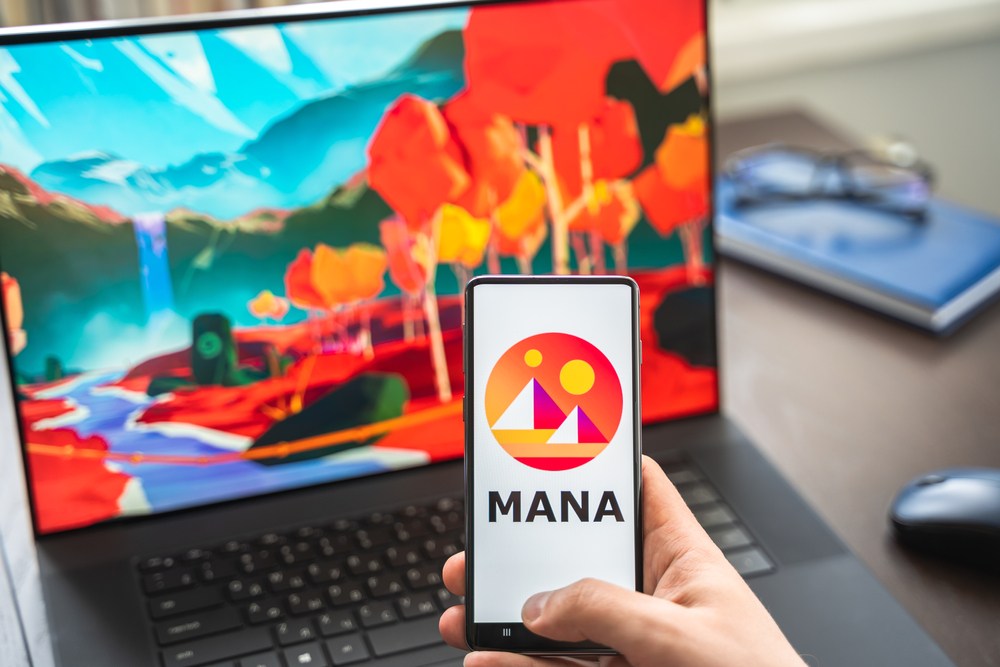
One of the more popular concepts of earning money in the metaverse is that you can buy land and resell it, just like real estate in the real world. I think this is a popular concept because it sounds easy, involves very little work, and there are plenty of exciting clickbait articles out there. For example, plots of digital land next to Snoop Dogg’s digital parcel have sold for millions.
If you can’t tell already, I think the concept is kind of bullshit.
What these headlines don’t tell you is that this is probably an advertising technique to get you interested in the game, and that these numbers are not a reflection of what’s really happening in the game.
- Step 1: Launch a token and collect money from retail investors
- Step 2: Pay celebrities money to “buy land” in your game
- Step 3: Have your friend pay a stupid amount of money for a parcel next to the celbrity
- Step 4: Have your other friend submit an article to Yahoo News
- Step 5: Pay a crypto influencer to tweet out the article
This is a well known technique for generating buzz about NFT projects, so there’s no reason it wouldn’t work in the metaverse space as well.
The truth is that metaverse worlds are not limited by anything other than a company who says how much land there is. These are games, owned by companies, with investors and board members, who make the rules as they see fit. If, in some crazy scenario, a metaverse game really blew up and became popular, it’s pretty likely that they’d just make more land.
This is the digital world. Not the real world.
Unlike Bitcoin, which has a hard cap limit of 21 million coins enforced by 10,000+ bitcoin nodes located around the world, metaverse games have no such limitation, even if they are built on the blockchain. If you aren’t running a node for your metaverse game and enforcing the limitation rules yourself, that means someone else is. Most likely a company. Most likely with a large insider stake. Most likely someone who would benefit from adding resources to the game, even at the expense of the value of your land.
To make money from real estate in the metaverse, you not only have to guess the right game, on the right blockchain, and buy land at the right time, you also have to trust that the game devs, blockchain stakeholders, and company insiders all “vote” in your favor.
4 Metaverse Games To Make Money
1. Decentraland
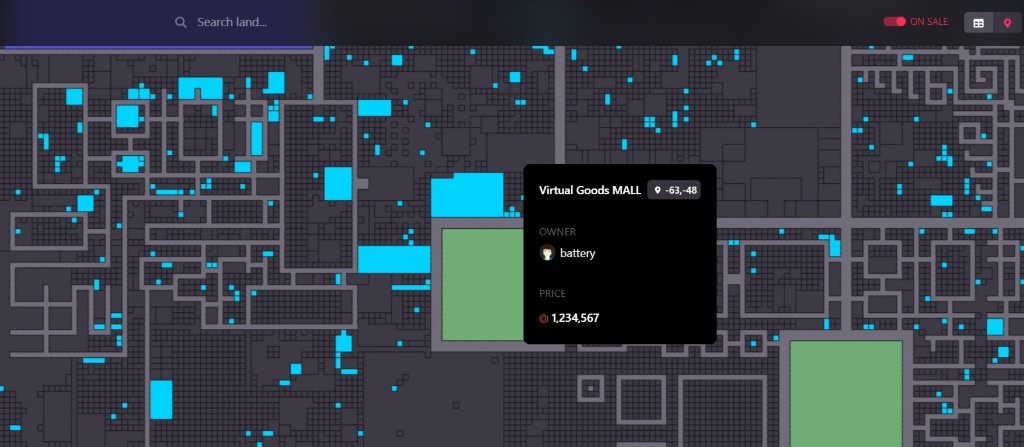
Decentraland is one of the first so-called metaverse projects based around blockchain and cryptocurrency. After launching in 2020, users soon flocked to the platform, making it much more popular than perhaps the founders envisioned. It is virtual world where anyone can visit without investing a dime.
I’ve played this one before, and to be honest, it was quite a disappointment. Childish graphics and no real aim to the game meant that it wasn’t really an “immersive” experience for me.
Serious players in decentraland can buy land on the platform and develop it. Typically, people will make an NFT store, their own virtual home, or even simply buy to sell it later on down the road. Considering land started out being sold for reported prices starting around $20, and parcels of land currently being sold for for thousands of dollars, looking back, it seems like it may have been a good investment at the time!
The question is, moving forward, how lucrative will this opportunity be, especially since there are other metaverse games currently in development. Is Decentraland “sticky”?
Making Money in Decentraland
There are many great ways that you can make money in Decentraland. You can consider getting some land and waiting for its value to increase. You can engage in in-game gambling if you are feeling lucky, and you can also create paid content such as events. Finally, opening up your own NFT store on land purchased is perhaps the most common way we see people make money.
How Do You Acquire NFTs to Sell In Decentraland?
Before you get started and dive head first into NFTs, you might be wondering how you can even acquire NFTs that you can sell in Decentraland and other metaverse projects. You have two options, either make them yourself or buy and resell.
To buy, start by heading over to OpenSea, which is the largest NFT marketplace and check out the massive catalog of items that you can buy. Once in your wallet, you can easily hoist up an art gallery and frames to advertise your NFT straight in the metaverse.
NFTs are pieces of digital art, and I’m not very bullish on the long term market art within metaverse worlds. Personally, I’m more interested in utilitarian NFTs such as skins or tools, which you can also buy/sell on the marketplace, but require more coding experience to get them to function within the game.
If you choose to create your NFTs, you will either need to find a provider like GoArt to facilitate the minting of your NFTs, or handle the process of minting your NFTs manually. In any case, expect to pay gas fees for handling the minting of NFTs, which can range from $20 – $500 on average.
Profit Potential in Decentraland
There certainly is upside potential for profit with Decentraland, but the downside for investors to be aware of is also equally prevalent. There is simply no telling what today’s new and exciting metaverse projects (and their tokens) will be worth anything in just a few years.
In rare cases, those who bought parcels for $20 back in 2020 can currently sell their land for over $10,000. In most other cases, land bought has not outperformed other traditional investments, or has even lost value over time.
The Biggest Decentraland Success Story
Perhaps the biggest success story from Decentraland is when a plot of virtual land sold for 618,000 MANA, valued at $2.4 million at the time of writing. The land, made up of 116 smaller parcels, was bought by a subsidiary of Tokens.com, undoubtedly making the previous owner very happy with the sale.
The Decentraland In-Game Tokens
Two primary tokens run the Decentraland economy: LAND and MANA. Both are tokens on the Ethereum blockchain. LAND serves as a non-fungible digital asset corresponding to any real estate you own on the platform.
On the other hand, MANA is the main currency used in the game for buying real estate, aesthetic items for your avatar, and other items in the metaverse. When MANA is spent to LAND, the MANA tokens can quickly be converted to ETH and back to fiat. Just be aware of gas fees for Ethereum, exchange fees to USD, and any bank wire transfer fees along the way.
When you want to sell LAND, you will need first to list your real estate on the Decentraland marketplace.
2. Sandbox
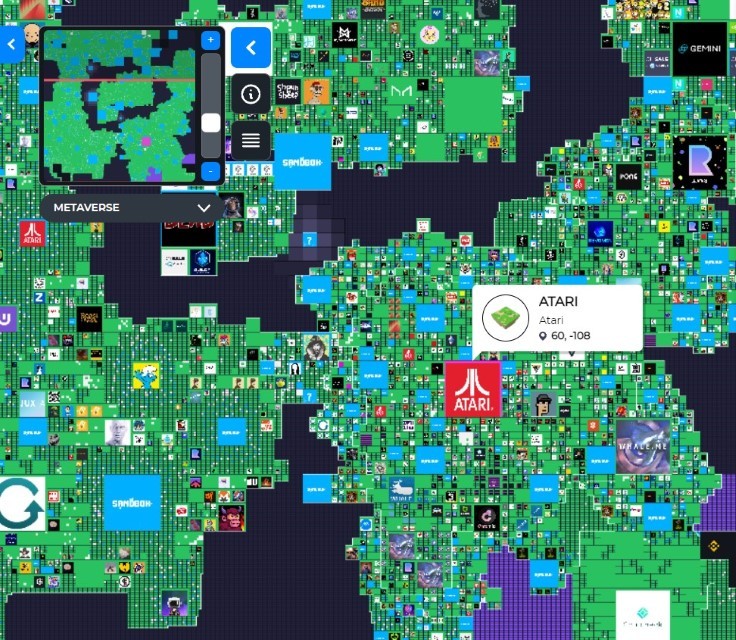
Sandbox is similar to Decentraland and is currently the more popular metaverse project. A limited amount of land is available in Sandbox, along with a native token that facilitates transactions. In the game itself, users are given unlimited freedom to utilize the platform however they wish.
Making Money in Sandbox
When pre-season 0 started in 2021, players could generate free SAND ERC-20 tokens simply by using the Sandbox platform. However, this play-to-earn model is not quite as lucrative anymore. Instead, the best way to make money using the play-to-earn model is by completing quests.
Recently Alpha Pass holders who completed Alpha Quests recently received awards valued at $4,000 (total for the group, not individually). Otherwise, buying land and reselling it at a higher value, renting your land, buying and selling digital assets (weapons, vehicles, avatar skins, etc.), and investing in Uniswap liquidity pools are among the top options to consider.
The beautiful thing about Sandbox is that you are open to being creative and coming up with fresh ideas. As a property owner, you will be able to rent your land, create attractions that only people willing to pay can engage in, and even set up your own store on the land.
You can probably start to see a recurring theme here, in that the main way to profit from these games is by buying and selling stuff within the game. Sandbox seems to be more popular for creating mini-games that cost money, so that’s one advantage to this game versus others.
One major downside to consider for any Metaverse games is that you are, however, limited to what the game allows you to code. In IRL situations, you are limited by physics and laws, but outside of that, anything is possible. You can make money mowing grass or inventing a new rocket fuel.
With metaverse games, you are limited to selling NFTs and mini-games. If you are an entrepreneur looking to make money, you’ll have wayyyyy more options doing something in real life, rather that selling digital hats in the metaverse.
Profit Potential for Sandbox
Like Decentraland, many people set up their own shops, create paid activities and events, and invest in the native token. Given that there are also opportunities to invest in passive income through liquidity pools, this is a great token to consider investing in.
The trouble with some of these liquidity pools, as Mark Cuban found out, is that although they may pay you passive income, if the native token loses value, your losses can easily exceed your profits.
If you keep your focus on having fun instead of profit, then you may get more enjoyment from the the process of making money in the metaverse. Some developers have fun on the platform and use it as a modern Roller Coaster Tycoon game that can provide monetary benefits. For example, imagine setting up your own paid ride in a metaverse and then charging people to ride it. People are already doing this, charging $5 and up for mere seconds of entertainment!
Biggest Sandbox Success Stories So Far
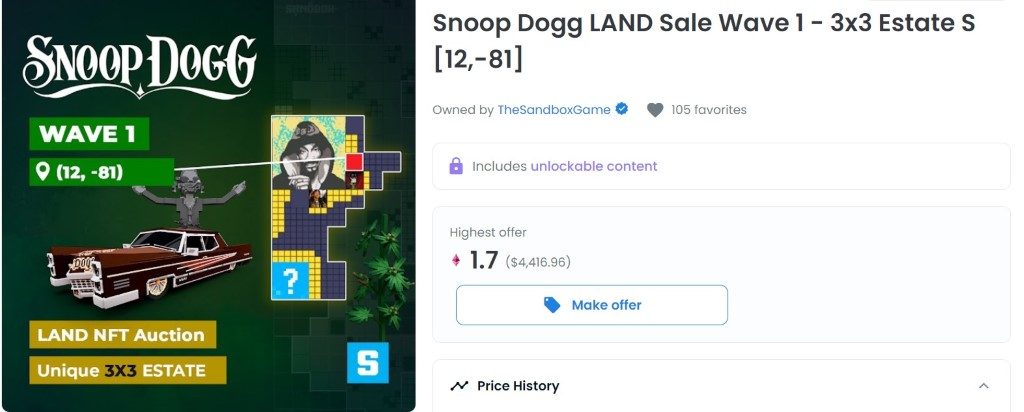
Perhaps the biggest success story in metaverse history thus far took place on Sandbox. As we explored in our guide for how much money you can make from NFTs, we discussed how Republic Realm purchased a plot of land in Sandbox for $4.3 million, the largest ever metaverse real estate transaction to date took place.
Headlines were also made when Snoop Dogg entered the Sandbox metaverse and decided to list LAND for sale around his private mansion. He plans to eventually host concerts and other events directly in the metaverse in the near future.
I always view news like this with a grain of salt though. You’re telling me Snoop Dogg is a crypto fan and randomly bought land in this game for millions of dollars? Yeah, right. It’s like when Kim Kardashian endorsed Ethereum Max. It was a promotional thing to get attention to the project.
The Sandbox In-Game Tokens
The two primary tokens to be aware of in the Sandbox platform. The SAND ERC-20 token is the main currency for the metaverse, which is used as a medium for exchange when buying items for your avatar, buying and renting land, and so on.
Then, there is a LAND token, a non-fungible ERC-721 token on Ethereum’s blockchain. Since both tokens are on the ETH blockchain, high gas fees should be expected when doing any sort of transaction!
3. Somnium Space
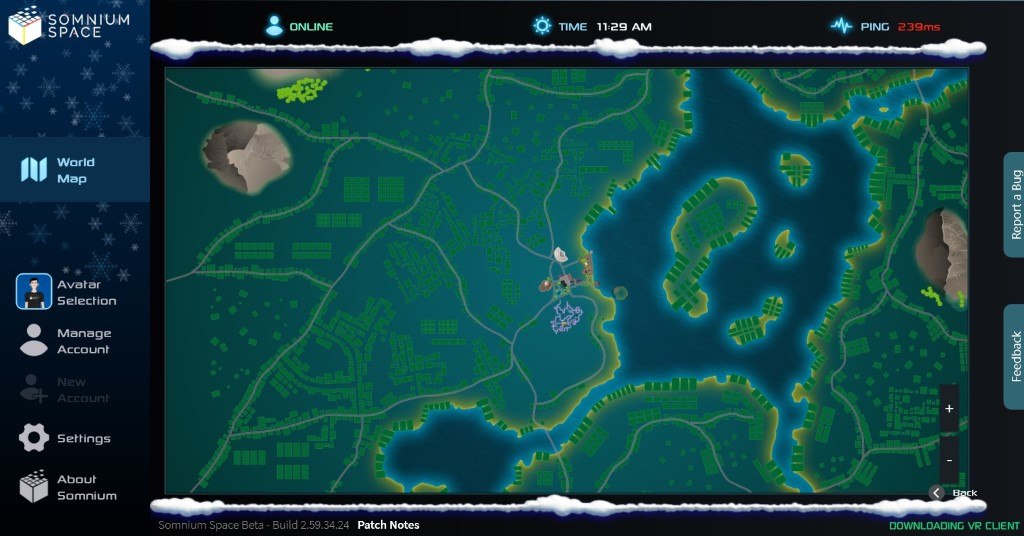
Somnium Space is perhaps the best metaverse to get into if you are ready to use your VR headset. Although very similar to Decentraland and Sandbox, this metaverse project has its own fair share of perks. Right off the bat, perhaps what is most unique about this project is that you need to use a VR headset to make full use of the metaverse.
Making Money in Somnium Space
Like Decentraland and Sandbox, Somnium Space is built on the Ethereum blockchain. Recently, it has started to support the Solana blockchain for various NFTs. The options for making money in this metaverse are not too different from what we explored on other platforms. You guessed it: buy/sell land and mint NFTs.
As an investor, perhaps the best idea is to buy virtual land and the CUBE currency that runs the economy of Somnium Space. If metaverse projects like this continue to pump, then it might be safe to assume that Somnium Space and its native coin will too.
Profit Potential for Somnium Space
If you are looking for lucrative options to make some money with Somnium Space, you might buy some land and set up your own story, offer to run paid ads. Of course, running paid ads requires that there are users in the space, and I’m not sure how much traffic these places actually get. I’m just spitballing some ideas here.
There have been cases of running paid ads in virtual worlds, but nothing mainstream just yet.
Of course, many of the same ideas and profit potentials discussed above can apply to Somnium Space. Since users on the platform can engage with other people’s property and even pay you for things like NFTs for avatar aesthetics, artwork, and so on. Some people even charge $20-100 per hour to develop land for other people on Somnium Space. If you are a good artist, this could be a great way to help develop infrastructure and presence on this metaverse while earning you some good income.
Those seeking to invest in virtual land might also view Somnium Space as the best area for a potential return. Unlike Sandbox and Decentraland, Somnium Space hasn’t quite had any significant real estate sales over $100k. Therefore, if the platform were to grow, those currently holding land might be able to rack in this sort of sale.
Most Noteworthy Sales
When Somnium had its tertiary land sale in November 2021, it experienced a massive influx of volume. In a matter of four days, they generated sales adding up to around $700,000. The largest sale of land was valued at the time at $36,456.
One buyer in particular boasted spending over $63,000 on virtual land in the Somnium Space. However, it is unclear if Somnium Space will be able to grow and make it up to be a powerhouse in the metaverse industry. If so, there will be tons of success stories on the horizon for the near future!
In-Game Tokens
The two foremost in-game tokens for Somnium Space are the non-fungible ERC-721 LAND tokens and the ERC-20 CUBE tokens. Currently, both of these tokens run on the Ethereum blockchain. However, Somnium Space has recently begun supporting Solana NFT projects on its platform. This is very noteworthy, as many other top metaverse projects still depend on Ethereum.
4. Second Life
Second Life is the original metaverse and the pioneer of projects such as those explored above. When it was first launched in 2003, the creators surely had no idea what they were setting themselves up for.
Fast forward to the future and we know now that metaverse projects are one of the latest causes of excitement for cryptocurrency and blockchain projects. However, one big thing to note with Second Life is that it does not function with blockchain or cryptocurrency.
Actually, I think this is a great argument for why metaverse games don’t actually need to be “on the blockchain”, and don’t need a native cryptocurrency token. As you’ll read below, the Linden Dollar (L$) has been around for more than a decade, and works well as a simple in-game dollar exchange, without the promise of an immutable, government-resistant currency.
Making Money & Profit Potential in Second Life
Surprisingly, the concepts for making money in Second Life are not that much different than what we see in other metaverse projects. You can buy and sell land, create virtual clothing, avatars, and other similar objects to be sold, and so on.
Weird how that works, huh. Looking back at second life, it seems like there’s really nothing new with these metaverse games.
In fact, I’d say that the Second Life economy is much more developed. Entrepreneurial users of Second Life can participate in affiliate programs, sell valuable information, get an in-game job, engage in events with prizes, and so on. Since there are no rules, plot, conflict, and so on in Second Life, users can use the platform how they wish.
Although you won’t be earning cryptocurrency with Second Life, the Linden Dollars can be easily exchanged to USD and deposited into your account. Say that you earned 1000 L$ doing a few tasks for somebody you met on the metaverse. That would give you a quick $5 that can be easily changed back to real money.
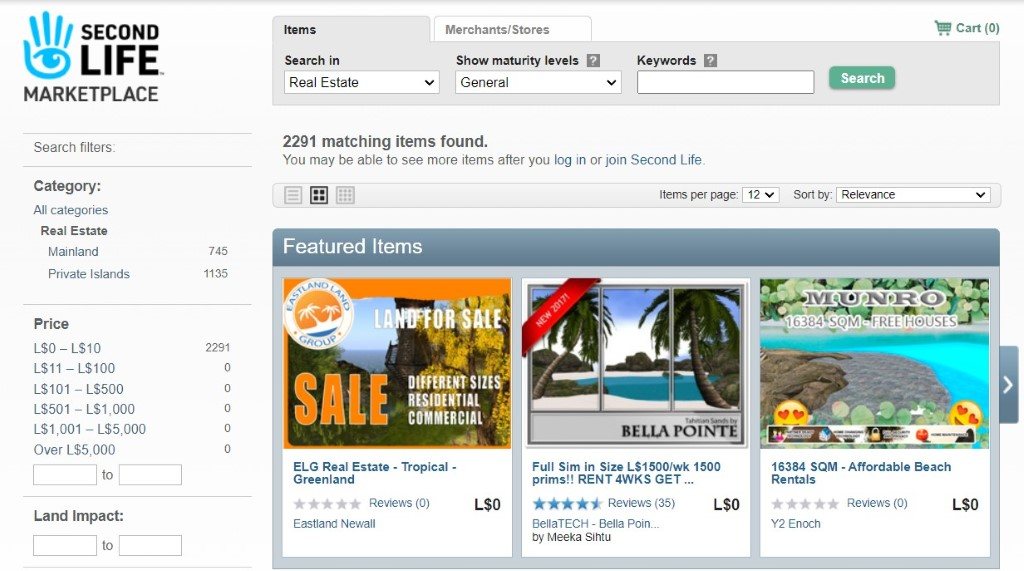
As briefly mentioned, Second Life stands apart from the other metaverse projects mentioned on this page because it is not currently a cryptocurrency project. Instead, the users engage with the native Linden Dollars, which is essentially Monopoly money. However, you can cash it out for real USD.
Needless to say, though, it doesn’t seem the profit potential on Second Life is as massive as it was in the early 2000s. The price for Linden Dollars hasn’t changed much since 2008, and the platform boasts more than 900,000 active users. To generate considerable profit these days, you would need a remarkably new and unique idea to add to the metaverse to produce massive amounts of value for the users.
Making $1000/month on Second Life is not nearly as common today as it was 15 years ago, though! To be realistic, aim to make an average of $5-10/day doing tasks such as the ones mentioned here.
One of the biggest headlines for Second Life was in 2006 when the first metaverse millionaire was made. Long before the buzzword “metaverse” even came around, Anshe Chung from China worked her way from the streets of Second Life to become a millionaire in the real world. To do this, she acquired a vast portfolio of property, shopping malls, and made many of her own brands in Second Life after starting with an investment of just $9.95.
Linden Dollars Are Not a Cryptocurrency
The in-game Linden Dollars are not a cryptocurrency, unlike the trends we see with other metaverse projects embracing their own native crypto tokens. This is one of the most significant differences between Second Life and other metaverse projects. Since the Linden Lab developers are the only source for buying and selling Linden Dollars, many people might instead prefer projects with tokens that can be traded on a decentralized exchange (DEX) like Uniswap.
The main disadvantage to Linden Dollars is that they are only usable within the Second Life platform, and are not tradable anywhere else. With cryptocurrencies, you can exchange them on multiple cryptocurrency exchanges, and there’s the possibility of being able to exchange them directly for online goods in the future.
Final Thoughts About Making Money In The Metaverse
As of right now, making money in the metaverse is extremely speculative in every way imaginable. These “metaverses” are essentially online games where you can make & trade assets. The games are underdeveloped, the economies are basically non-existent, and the future of NFTs is unclear.
Yes, some people make some money on these platforms, but the majority do not. Perhaps this is the way that any new emerging technology and economy should work, but just make sure you go into a project like this with open eyes.
So far, the main way people seem to be earning massive profits with projects like this is not by actually engaging in the metaverse economy, but instead, by buying, holding, and trading the associated tokens. It’s much more profitable to hold something like $SAND or $MANA through a 100% price pump than it is to grind out NFTs to sell at your local metaverse shop.
Ultimately, people will follow the incentives.
Will people spend more time developing their metaverse profiles, or just ape into a coin and pray for a pump? My bet is on the latter.
What’s up ladies and dudes! Great to finally meet you, and I hope you enjoyed this post. Sign up for my #1 recommended training course and learn how to start your business for FREE!
